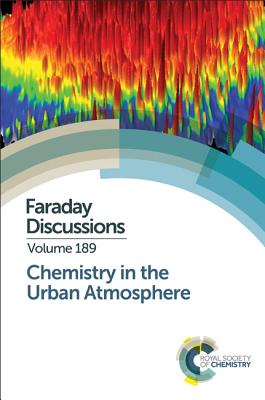Urban atmospheres are clearly distinguishable from most rural and all remote atmospheres by their high primary pollutant loadings and relatively fast reaction times. However, these rapid reactions are currently poorly captured by numerical models. Recent research on urban air pollution has focused upon cities as a source of air pollutants to the regional and global atmosphere. This neglects the impact of urban air pollution upon human health. With the increasing urbanisation of human populations, this topic is of great importance. This Faraday Discussion addresses both the key questions and the over-arching issues related to understanding chemistry in the urban atmosphere. It explores the chemical complexity of the urban atmosphere; the relative timescales of mixing and of chemical processes; lessons from past major studies of the urban atmosphere; and numerical modelling strategies.
| FindBook |
有 1 項符合
Chemistry in the Urban Atmosphere的圖書 |
 |
Chemistry in the Urban Atmosphere 作者:Not Available(NA) 出版社:Royal Society of Chemistry 出版日期:2016-07-29 語言:英文 規格:精裝 / 676頁 / 23.4 x 16 x 4.1 cm / 普通級 |
| 圖書館借閱 |
| 國家圖書館 | 全國圖書書目資訊網 | 國立公共資訊圖書館 | 電子書服務平台 | MetaCat 跨館整合查詢 |
| 臺北市立圖書館 | 新北市立圖書館 | 基隆市公共圖書館 | 桃園市立圖書館 | 新竹縣公共圖書館 |
| 苗栗縣立圖書館 | 臺中市立圖書館 | 彰化縣公共圖書館 | 南投縣文化局 | 雲林縣公共圖書館 |
| 嘉義縣圖書館 | 臺南市立圖書館 | 高雄市立圖書館 | 屏東縣公共圖書館 | 宜蘭縣公共圖書館 |
| 花蓮縣文化局 | 臺東縣文化處 |
|
|
圖書介紹 - 資料來源:博客來 評分:
圖書名稱:Chemistry in the Urban Atmosphere
內容簡介
作者簡介
Faraday Discussions documents a long-established series of Faraday Discussion meetings which provide a unique international forum for the exchange of views and newly acquired results in developing areas of physical chemistry, biophysical chemistry and chemical physics. The papers presented are published in the Faraday Discussion volume together with a record of the discussion contributions made at the meeting. Faraday Discussions therefore provide an important record of current international knowledge and views in the field concerned. The latest (2012) impact factor of Faraday Discussions is 3.82.
|











